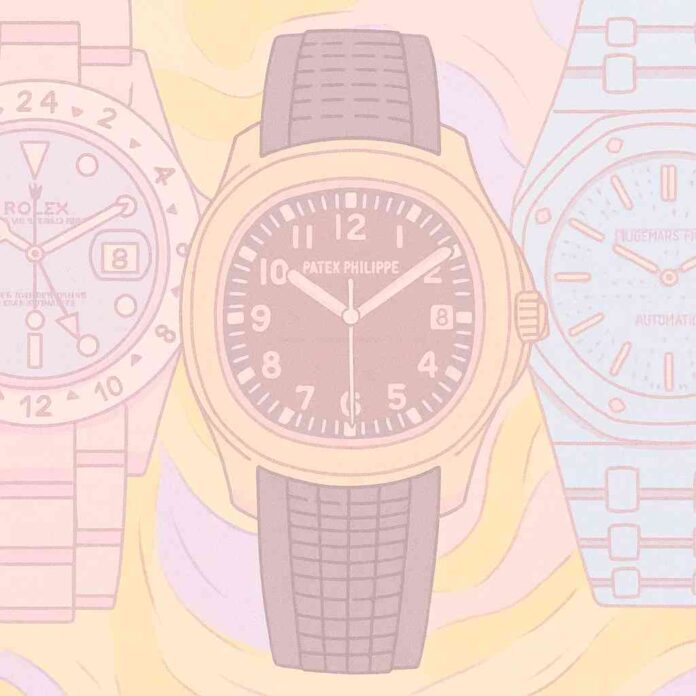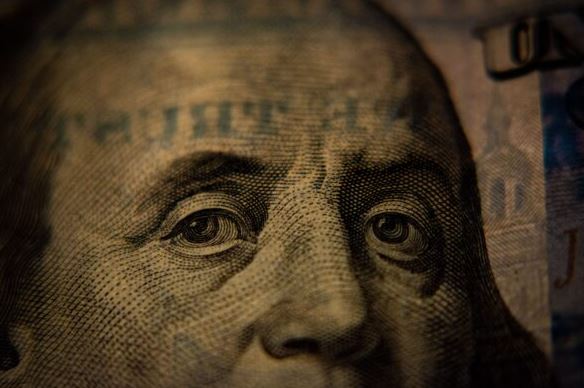The world of investing has broadened far beyond traditional equities, bonds, and real estate. Over the past two decades, alternative assets such as art, vintage cars, rare wines, and luxury watches have gained visibility as investors search for uncorrelated returns and tangible stores of value. Among these, luxury timepieces—particularly those from iconic Swiss brands—have captured both the imagination and the wallets of collectors and investors alike.
But are luxury watches a viable investment class in 2025? What risks should investors be aware of, and where do the opportunities lie? This guide provides a comprehensive 1,400-word exploration of watch investing, complete with real examples of successful and unsuccessful cases.
1. Why Luxury Watches Attract Investors
Tangibility and scarcity
Unlike equities or cryptocurrencies, luxury watches are physical, tangible items. Many models are produced in limited quantities, creating scarcity by design. Watches from brands like Rolex, Patek Philippe, and Audemars Piguet often have waiting lists at authorized dealers, reinforcing the perception of rarity.
Prestige and emotional value
Luxury watches carry cultural cachet. A Rolex Submariner, Patek Philippe Nautilus, or Audemars Piguet Royal Oak is not only a functional timepiece but also a status symbol. This mix of utility, design, and heritage often provides emotional “dividends” alongside potential financial returns.
Inflation hedge potential
As with gold or art, some investors see luxury watches as hedges against inflation. Because production is finite and demand is global, watches can sometimes maintain or increase value even when traditional assets are volatile.
Market growth
According to Deloitte’s Swiss Watch Industry Study (2024), global luxury watch exports reached record highs, surpassing CHF 26 billion. Strong demand in Asia, the Middle East, and North America suggests enduring appetite, especially for steel sports watches and complicated pieces.
2. The Opportunities
A) Blue-chip models with proven demand
Certain watches are near-legendary in their ability to hold or increase value. These include:
- Rolex Daytona (steel references): Extremely limited availability and strong pop-culture recognition.
- Patek Philippe Nautilus Ref. 5711/5712: Discontinued in 2021, leading to surging secondary market prices.
- Audemars Piguet Royal Oak Jumbo Extra-Thin: A Gerald Genta design icon.
Collectors often compare these to “blue-chip” stocks—time-tested, liquid, and with an active resale market.
B) Limited editions and discontinued models
When a brand discontinues a model, scarcity intensifies. The Rolex Hulk (green Submariner), for instance, jumped in value after discontinuation in 2020. Investors who acquired one at retail (~$9,000) saw secondary prices reach nearly $20,000 within two years.
C) Emerging independents
Independent watchmakers such as F.P. Journe, Richard Mille, and MB&F have gained cult followings. While riskier, they offer outsized upside. Early buyers of Richard Mille’s RM 11 Flyback Chronograph could see resale values quadruple, as the brand’s production and celebrity endorsements expanded.
D) Global liquidity and digital platforms
Secondary markets have matured. Platforms such as Chrono24, WatchBox, and even auction houses like Christie’s and Phillips provide price transparency and global liquidity. This infrastructure makes it easier for investors to trade watches across borders, reducing illiquidity risk compared to art or wine.
3. The Risks
A) Market volatility and hype cycles
Watch prices can be extremely sensitive to hype. The 2020–2022 boom, fueled by pandemic-era disposable income and speculative enthusiasm, pushed many Rolex, Patek, and Audemars models to unprecedented heights. By 2023, correction set in, wiping out 30–40% of values for some models.
B) Counterfeits and authenticity risk
High demand attracts fakes. Counterfeit Rolexes are notorious, and even seasoned collectors can struggle to detect “superclones” without expert verification. An investor buying without papers, provenance, or expert authentication risks total loss.
C) Liquidity under pressure
Though luxury watch markets are more liquid than art, they are not immune to downturns. When macroeconomic conditions weaken, discretionary purchases fall first. Selling quickly in such environments often means steep discounts.
D) Overpaying at peak cycles
The Patek Philippe Nautilus 5711 provides a cautionary tale. After its discontinuation, secondary prices skyrocketed to nearly $200,000 by 2022, despite a retail price around $35,000. By 2024, prices corrected closer to $120,000. Investors who entered near the top faced six-figure paper losses.
E) Costs of ownership
Storage, insurance, servicing, and transaction fees eat into returns. A mechanical watch may require a $500–$1,000 service every 3–5 years, and insuring a six-figure piece adds ongoing cost.
4. Successful Case Studies
Rolex Daytona Ref. 116500LN
- Retail Price (2016): ~$12,000
- Secondary Market (2022 peak): ~$45,000
- Current Value (2025): ~$35,000–$38,000
Why successful: Iconic status, celebrity endorsements, and Rolex’s production scarcity combined to create long-term appreciation. Early buyers enjoyed triple-digit returns, and even after market correction, values remain far above retail.
Patek Philippe Nautilus Ref. 5711/1A
- Retail Price (2021): ~$35,000
- Secondary Peak (2022): ~$200,000
- Current Value (2025): ~$110,000–$130,000
Why successful: Discontinuation created frenzy. Investors who bought at retail or even in early aftermarket phases multiplied their capital. However, those who bought at peak prices learned a painful lesson about speculative bubbles.
Richard Mille RM 011
- Retail Price (2010s): ~$80,000
- Current Value (2025): ~$300,000+
Why successful: Richard Mille leveraged scarcity and celebrity marketing (athletes like Rafael Nadal). Limited production and unique design propelled values. Early believers in independents were rewarded.
5. Unsuccessful Case Studies
Hublot Big Bang Limited Editions
- Retail Price (2010s): ~$20,000–$30,000
- Secondary Market (2025): Often <50% of retail
Why unsuccessful: Overproduction of “limited” editions diluted scarcity. While fashionable in certain circles, Hublot lacks the secondary market prestige of Rolex or Patek, leading to steep depreciation.
Panerai Luminor Boom and Bust
- Retail Price (early 2000s): ~$5,000–$7,000
- Secondary Peak (2010): ~$10,000–$12,000
- Current Value (2025): ~$3,000–$4,500
Why unsuccessful: Panerai experienced a fad-driven boom in the early 2000s, especially among Hollywood stars. As trends shifted and the brand overproduced, values collapsed.
Patek Philippe Nautilus Peak Buyers (2022)
Investors who purchased at $180,000–$200,000 levels are sitting on losses of $50,000–$70,000 per watch by 2025. Despite being a blue-chip brand, timing and market psychology mattered.
6. How to Approach Watch Investing
A) Buy what you love
Because markets can swing, the safest approach is to buy pieces you would enjoy owning regardless of value. Emotional utility cushions volatility.
B) Focus on blue-chip models
Rolex, Patek Philippe, and Audemars Piguet remain the most reliable investment brands. While independents offer upside, they carry higher risk.
C) Do due diligence
- Buy from authorized dealers or trusted resellers.
- Verify provenance, serial numbers, and service history.
- Insist on box and papers when possible.
D) Think long-term
Short-term speculation often ends poorly. Collectors who held iconic models over 10–20 years generally did well.
E) Diversify within the category
Consider a mix of steel sports watches, dress watches, and independents. Don’t concentrate solely in one hype model.
F) Monitor macroeconomic cycles
Luxury demand tracks global wealth creation and economic health. Be cautious when liquidity is abundant and prices are frothy.
7. The 2025 Outlook
Resilient demand at the top
Despite corrections, demand for Rolex, Patek, and Audemars remains strong. Secondary prices in 2025 are stabilizing, suggesting the market has cooled from speculative excess but is far from collapse.
Digitalization of secondary markets
Platforms now provide real-time pricing indices, improving transparency. Tokenization of watches is also emerging, allowing fractional ownership—though regulatory clarity is still evolving.
Risks of oversupply
Brands may be tempted to ramp up production, but over-saturation can destroy value. Investors should watch manufacturer strategies closely.
Geopolitical and macro risks
Recessions, wealth downturns, or global crises can reduce discretionary spending. Watch investors must recognize that luxury goods are ultimately non-essential.
Conclusion
Luxury watches as an investment class offer both opportunity and risk. The stories of the Rolex Daytona or Richard Mille demonstrate how scarcity, design, and branding can generate extraordinary returns. Yet the crashes in Panerai or Hublot values—and the losses suffered by late entrants into the Nautilus frenzy—highlight the dangers of speculation, hype, and poor timing.
For investors in 2025, the most sustainable strategy blends passion with prudence: buy iconic models with enduring demand, verify authenticity, diversify exposure, and approach ownership with a long-term horizon. Above all, watches should not replace a diversified investment portfolio but rather complement it—as both a cultural pleasure and, potentially, a store of value.





